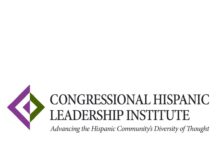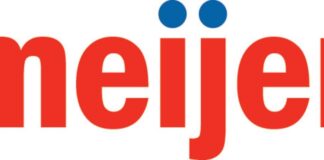PRINCETON, N.J., May 16, 2016 /PRNewswire-HISPANIC PR WIRE/ — A key strategy to improving educational outcomes and closing achievement gaps for children from low-income families is improving state finance systems to ensure equitable funding and increased access to resources, according to a new study from Educational Testing Service (ETS).
Logo – http://photos.prnewswire.com/prnh/20120110/DC33419LOGO
The report, “Mind the Gap: 20 Years of Progress and Retrenchment in School Funding, Staffing Resources & Achievement Gaps,” was commissioned by ETS and written by Bruce D. Baker, Rutgers University and Danielle Farrie and David G. Sciarra of the Education Law Center of New Jersey.
Using over twenty years of National Assessment of Educational Progress (NAEP) data on revenue and expenditures for schools, the authors explore the relationship between substantive and sustained school finance reforms and improved student outcomes. They focus on income inequality — specifically child poverty — for evaluating gaps in those educational resources and outcomes.
In the report, the authors study several factors including what they defined as human resources; pupil to teacher ratios, average class sizes and teacher wages as they relate to quality.
“What we are able to show is that across the nation, over the past decade and a half in particular, states with lower pupil to teacher ratios and fairer distribution of staffing tend to have both higher outcomes among low-income children and small achievement gaps between children from low-income and non-low income families,” Baker says. “We also have evidence that states in which teacher wages are more competitive have smaller achievement gaps and higher scores for children from lower income families.”
“Unfortunately, what we have seen over the past five years of available data is that state revenues sharply declined, current spending flattened out or declined, pupil to teacher ratios increased in most states, and current spending fairness worsened in most states,” adds Farrie. “This likely is the result of austerity cuts following the Great Recession and the loss of federal stimulus funds which were used to prop up state education budgets.”
Some of the report’s findings show that:
- Nationally, staffing per pupil generally increased since the early 1990s, but has declined in recent years. Over the entire 20-year-period, nearly all states increased the number of staff per 100 pupils, but most of those gains occurred prior to 2002. Changes over the past 10 years have been more modest, and over the past 5 years have been nonexistent.
- From 2000 to 2012, teacher wages in every state became less competitive. Over that period the state average reduction in wage competitiveness was 12%.
- Increased targeted staffing to higher poverty schools within states is associated both with higher measured outcomes of low-income children and with smaller achievement gaps between children from low-income and non-low income families.
“As a rule of thumb, for a state finance system to provide equal educational opportunity, that system must ensure sufficiently higher resources in higher need settings than in lower need settings,” says Sciarra. “We characterize such a system as progressive. By contrast, many state school finance systems barely achieve `flat’ funding between high and low need settings and still others remain regressive.”
“All students can succeed with the right resources and opportunities in place,” says Michael Nettles, Senior Vice-President and Edmund W. Gordon Chair for Policy Evaluation and Research at ETS. “This report sheds light on how resources are allocated in the United States and identifies that better-resourced areas have better educational outcomes.”
To learn more and or to download the full report, visit:
http://onlinelibrary.wiley.com/doi/10.1002/ets2.12098/full
About ETS
At ETS, we advance quality and equity in education for people worldwide by creating assessments based on rigorous research. ETS serves individuals, educational institutions and government agencies by providing customized solutions for teacher certification, English language learning, and elementary, secondary and postsecondary education, and by conducting education research, analysis and policy studies. Founded as a nonprofit in 1947, ETS develops, administers and scores more than 60 million tests annually — including the TOEFL® and TOEIC ® tests, the GRE ® tests and The Praxis Series ® assessments — in more than 180 countries, at over 9,000 locations worldwide. www.ets.org






